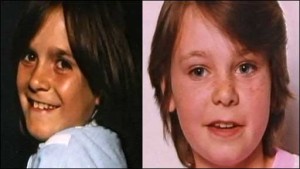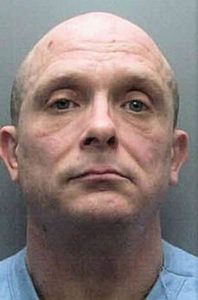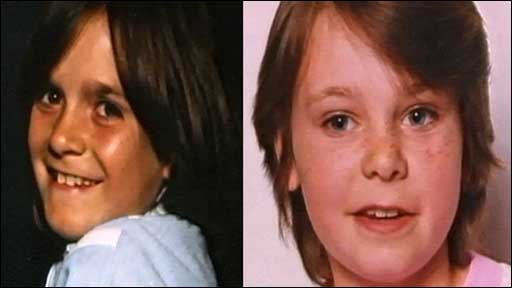The scientific evidence in the Babes in the Wood double murder trial is conclusive, the jury was told this afternoon (Tuesday 4 December).
Brian Altman, prosecuting, said that expert witnesses had ruled out the prospect of contamination, undermining the case on behalf of the defendant Russell Bishop
Bishop, 52, formerly of Stephens Road, Hollingdean, is on trial – for a second time – for the murder of Nicola Fellows and Karen Hadaway in Wild Park, Moulsecoomb, in October 1986. He denies both charges.
But Bishop, who was 20 at the time of the murders, had not called any expert witnesses with a plausible alternative explanation to the scientific evidence in the prosecution case.
Mr Altman said “inadvertent transfer is not a sensible explanation for the scientific findings” linking the 52-year-old former roofer to the murder of two nine-year-old girls in a Brighton park.
The prosecution relied on advances in DNA evidence – which was in its infancy in 1986 – as well as fibres, paint and hairs.
Mr Altman said: “It’s just too much and it’s too multi-layered and too multi-dimensional.”
And he added that the original tapings from the bodies – checking for fibres and hairs – were locked in a moment in time.
The former roofer stayed away as his trial entered what is expected to be its final week at the Central Criminal Court – better known as the Old Bailey – in London.
The jury was reminded that he had been convicted and jailed in 1990 – three years after his acquittal in 1987 – for the kidnap, sexual assault and attempted murder of a seven-year-old girl.
There were similar features in both cases, including in the way that Bishop, who was “forensically aware”, disposed of certain items of clothing.
But much of the forensic evidence in the 1986 case centred on a Pinto sweatshirt – and Mr Altman said: “There is ample evidence that the Pinto was his and that he wore it when he was attacking the girls.”

Mr Altman also said: “We can be confident in the reliability of the scientific evidence on which the prosecution relies upon.
“There was no possibility that the totality of these findings could be the result of inadvertent transfer.
“Even if one part were undermined there remains a vast amount of evidence scientifically proving the link between the Pinto, the defendant and his home environment, and the girls and their clothing.
“The scientific evidence has not been challenged. It has not been disputed. It has not been suggested that any scientist has got it wrong.
“You have not seen a scientist – instructed on behalf of the defence – go into the witness box to say we’ve got things wrong. That was open to them but it’s not happened.”
The prosecution had taken a cautious approach to the scientific evidence, Mr Altman said, but it was clear that the Pinto had been worn by the defendant.
And he said: “The fibre findings provided strong evidence that the Pinto had been worn in his home.”

Fibre and paint findings indicated recent contact between the Pinto and Nicola and recent contact between the Pinto and Karen.
In addition, “advanced statistical analysis” provided “extremely strong support” for the likelihood that the DNA mixture from Karen’s forearm came from the defendant and not from anyone else.
This is what we might expect, Mr Altman said, if the Bishop had been in close contact with Karen or Nicola at or around the time of their deaths.
Mr Altman added: “If Russell Bishop was to put forward an alternative explanation for these findings, I would be able to evaluate it (but) no such alternative had been provided.”
He said to the jury: “When you consider the combination of the scientific findings and the science alone then I invite you to conclude that not only was the Pinto worn by the defendant but it was worn by him when he killed those two little girls.
“But I must ask you not to forget all the other non-scientific evidence in the case.”

Bishop had told various people that he feared that he would be a prime suspect.
He said that this was because he had previously been arrested on suspicion of carrying out the Grand hotel bombing in October 1984 – and because his father had been arrested on suspicion of the October 1978 murder of 36-year-old Margaret Frame which is still unsolved.
“By 1986,” Mr Altman said: “he was no stranger to the criminal justice system. He had convictions for theft and burglary.”
But he didn’t help his chances, Mr Altman said, by embellishing his story, changing his version of events and telling a series of lies.
He told the police in an interview, for example, that he went to buy cannabis from Angie Cutting at her home in Ringmer Road, Moulsecoomb.
But she lived in Newick Road – the same street as the murder victims Nicky Fellows and Karen Hadaway.
Bishop denies two counts of murder.
The trial continues.









